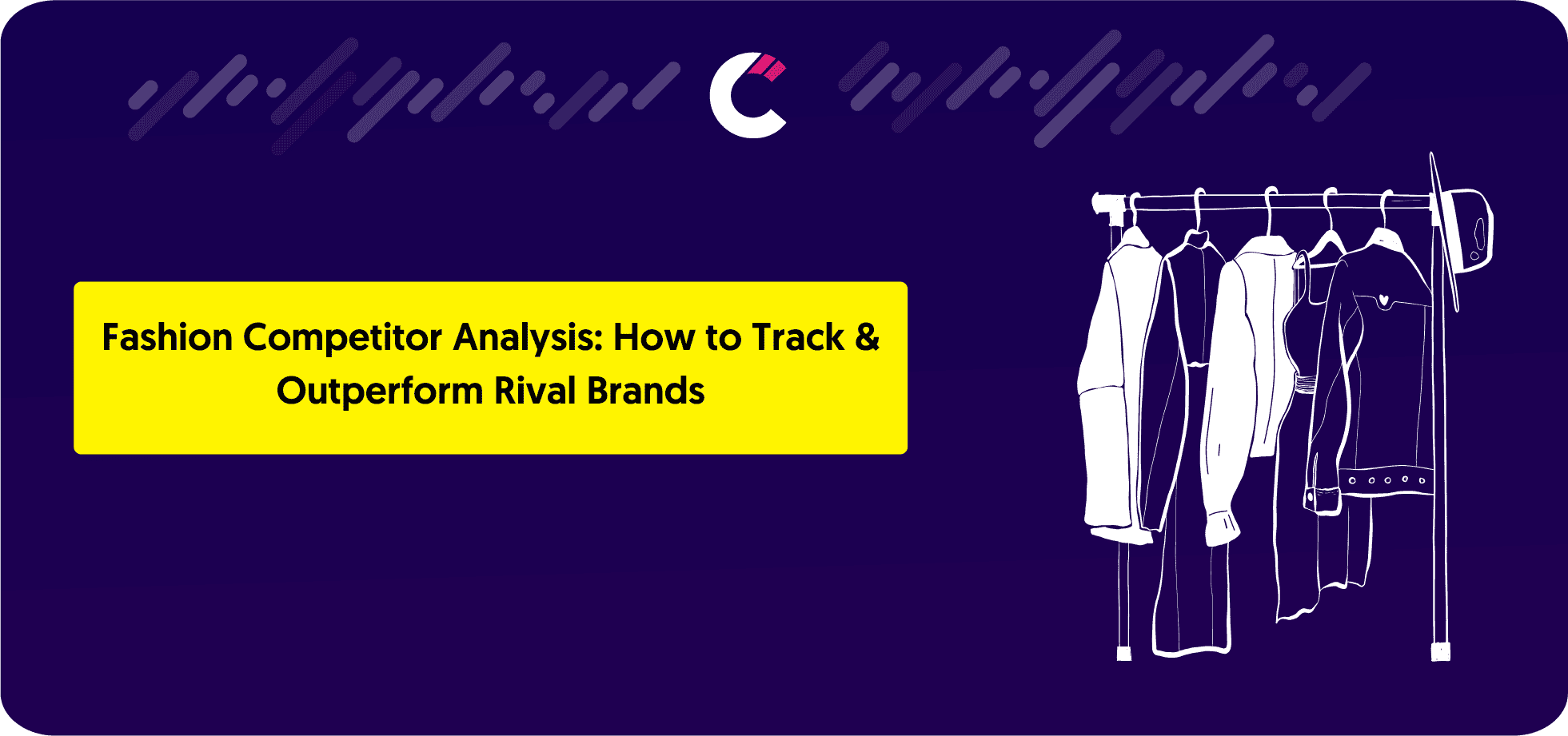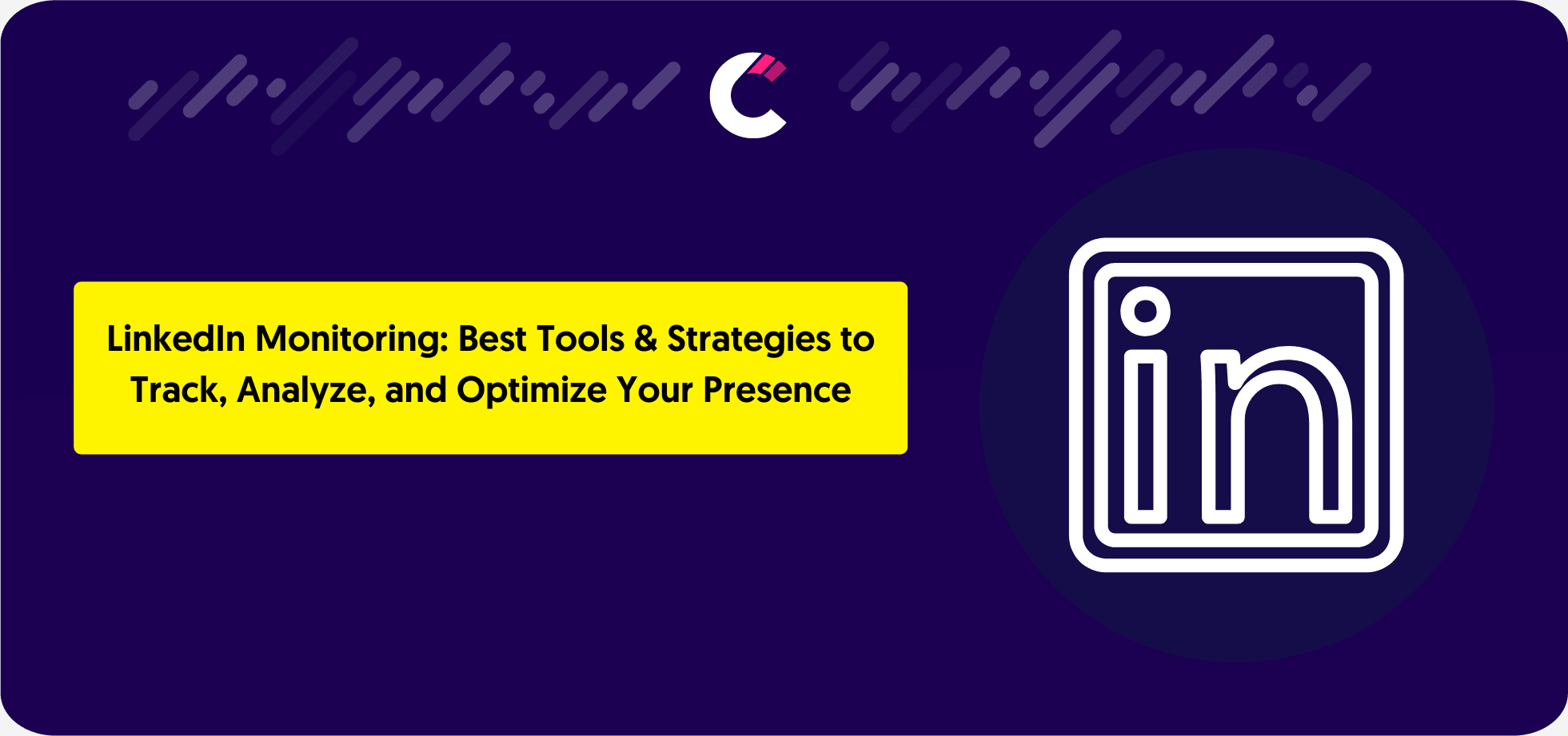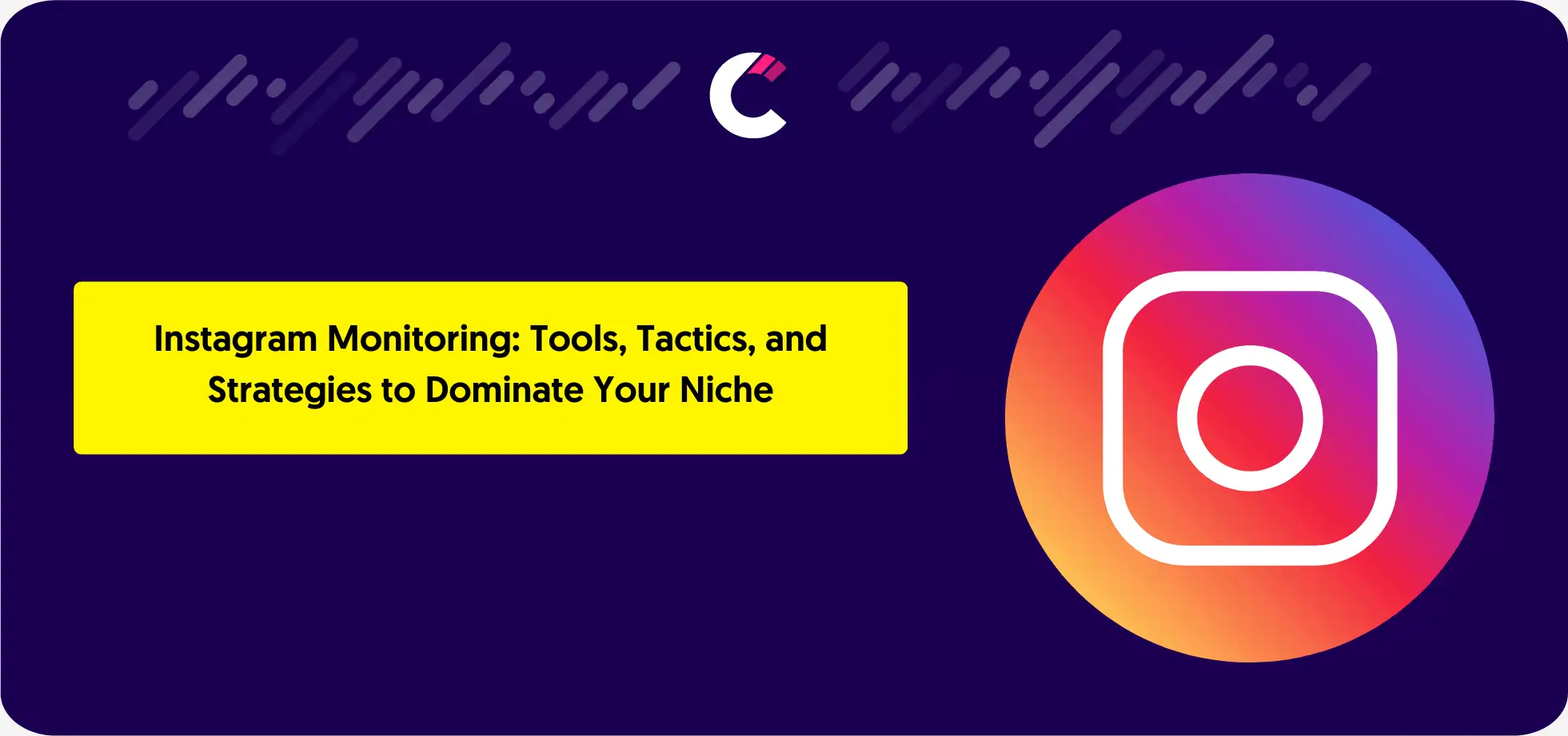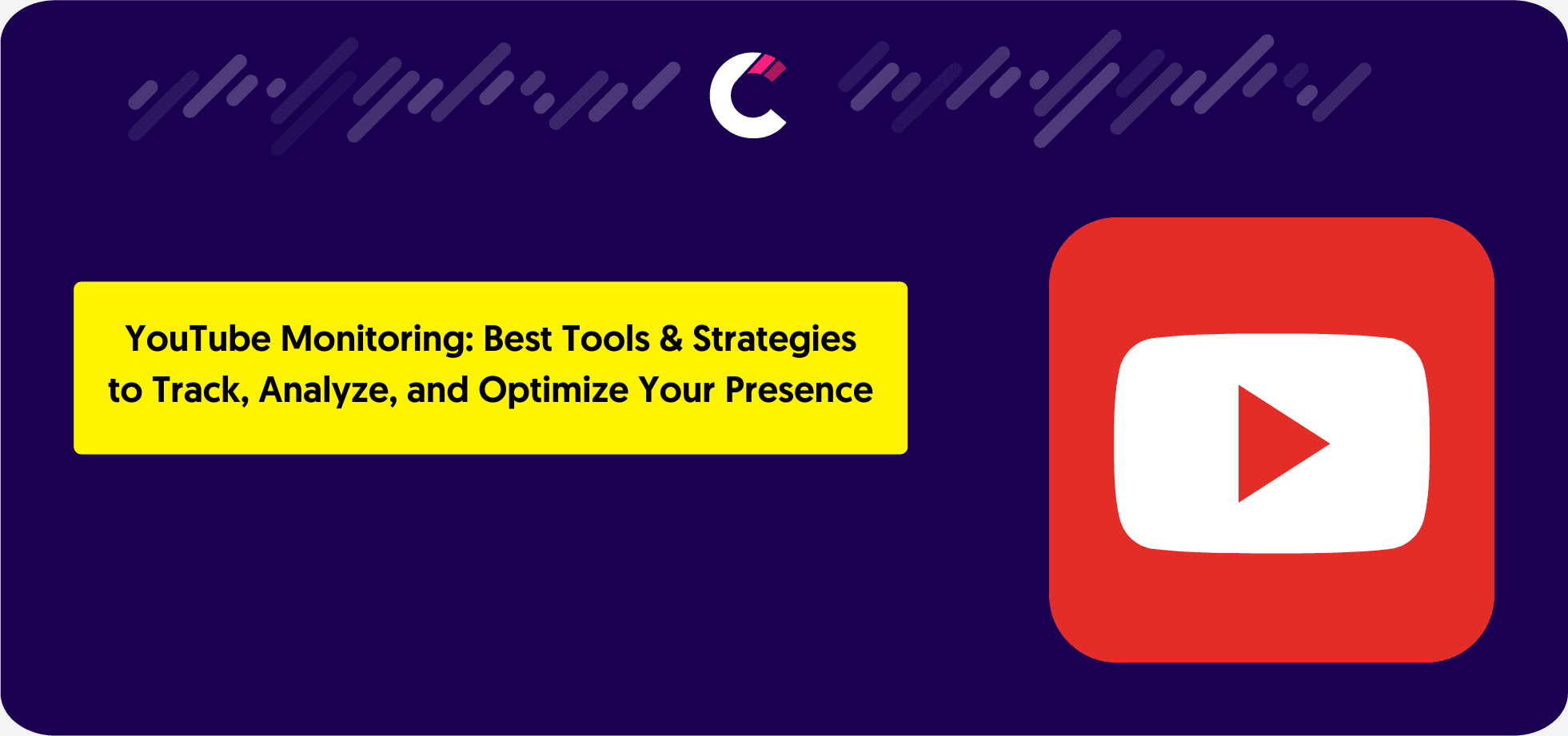What is Fashion Competitor Analysis?
Fashion moves fast. One minute, a brand is trending; the next, it’s forgotten. To keep up, brands need more than creativity—they need to understand what their competitors are doing.
Competitor analysis in fashion is all about tracking other brands to see how they price their products, what styles they’re pushing, where they’re marketing, and how customers are responding. It’s not just about watching—it’s about learning. The goal is to find gaps, spot opportunities, and refine your own strategy to stay ahead.
Unlike broad industry analysis, this process is specific to fashion, focusing on things like seasonal trends, influencer collaborations, and the way brands use social media to drive engagement. The brands that do this well don’t just follow trends—they set them.
Why is Fashion Competitor Analysis Essential?
Fashion isn’t just about style—it’s about strategy. No matter how good your designs are, if you don’t understand your competition, you’re playing a guessing game. Competitor analysis helps brands make informed decisions, stay ahead of trends, and build a loyal customer base.
Here’s why it’s important:
- Find your place in the market – Knowing what similar brands are doing helps you define what makes yours different. Whether it’s price, quality, or aesthetics, standing out is key.
- Stay ahead of trends – Fashion moves fast. If you’re always reacting instead of anticipating, you’ll fall behind. Tracking competitors helps you spot shifts before they go mainstream.
- Improve marketing strategies – What platforms are competitors using? What kind of ads are working for them? Learning from their successes (and failures) makes your campaigns stronger.
- Understand customer expectations – Reviews, social media engagement, and product launches tell you what customers love—and what they don’t. Use that insight to fine-tune your products and messaging.
Competitor analysis isn’t about copying—it’s about being smarter. The brands that consistently grow are the ones that pay attention, adapt, and evolve.
Identifying Your Competitors in the Fashion Industry
Types of Competitors in Fashion
Not all competition is the same. Some brands sell nearly identical products to the same audience, while others compete in ways you might not expect. Understanding these differences is crucial to positioning your brand effectively.
Here are the three main types of competitors in fashion:
- Direct competitors – These brands offer similar products at a similar price point to the same target audience. Think Zara vs. H&M or Gucci vs. Prada. If a customer doesn’t buy from you, they’re likely buying from them.
- Indirect competitors – These brands don’t sell the same products but fulfill the same need. For example, a luxury handbag brand competes indirectly with a high-end jewelry brand—both target consumers looking for premium fashion accessories.
- Emerging competitors – These are up-and-coming brands gaining traction. They might not be a major threat now, but they could be in the near future, especially if they’re attracting your target audience with fresh designs, innovative marketing, or better pricing.
Ignoring any of these competitors is a mistake. Fashion is unpredictable, and the brands that stay informed are the ones that stay relevant.
How to Conduct Fashion Competitor Analysis Using Competitors App
Tracking competitors manually takes time—time you could spend improving your brand. Instead of checking websites, social media, and ads one by one, automation makes the process faster and more accurate. That’s where Competitors App comes in.
This tool tracks competitor activity in real time, providing insights into pricing strategies, product launches, marketing campaigns, and customer sentiment.
Here’s how to use it effectively:
Step 1: Sign Up and Set Up Your Dashboard
Begin your journey by setting up an account with Competitors App. Take advantage of the 15-day free trial to explore the full range of features. This trial period allows you to monitor up to 10 competitors, giving you a comprehensive view of their online marketing strategies. You’ll gain insights into their main keywords, the ads and creatives they’re using, and much more. This initial step is crucial for establishing a baseline understanding of your competitive landscape.

Step 2: Identify Your Ecommerce Competitors
Use the Free Competitor Finder Tool to discover competitors in your market. This tool helps identify direct competitors selling the same products, indirect competitors targeting the same audience, and replacement competitors offering alternatives. Staying updated on emerging competitors ensures you’re always prepared to adjust your strategy.

Step 3: Add Competitors for Automated Tracking
Once you’ve identified key competitors, add them to your dashboard for continuous tracking. This allows you to monitor their marketing strategies, ad placements, SEO updates, and website changes—all from one place.
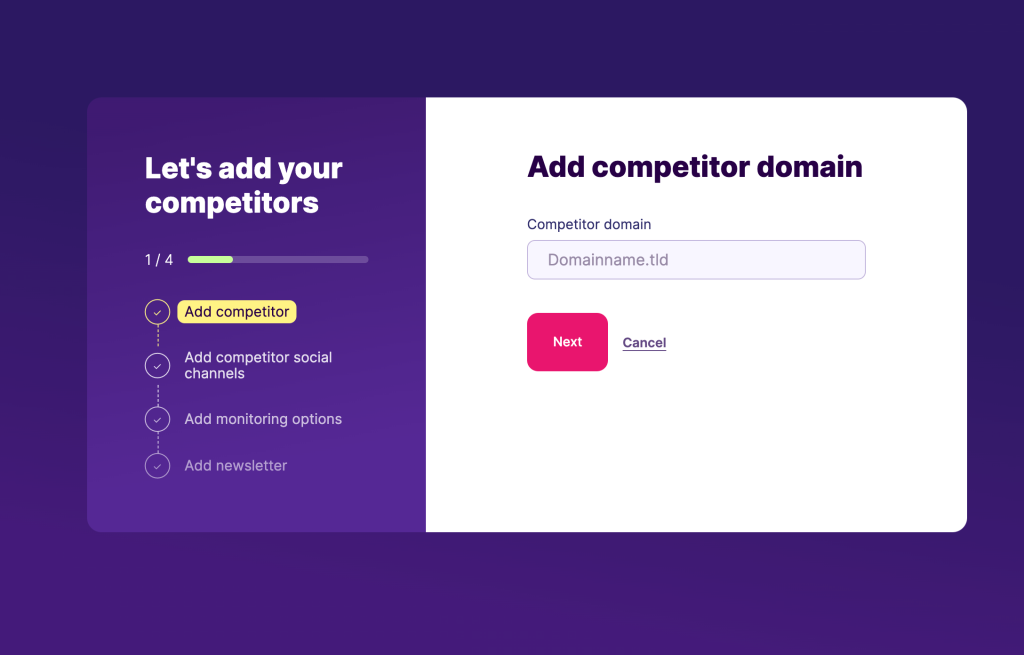
Step 4: Automate Competitor Tracking
Your Competitors App dashboard provides valuable insights, including:
- Social media activity
- Paid advertising campaigns
- SEO rankings and backlink profiles
- Website content updates
- Email marketing strategies
These insights help you spot trends, gaps, and new opportunities in your industry.
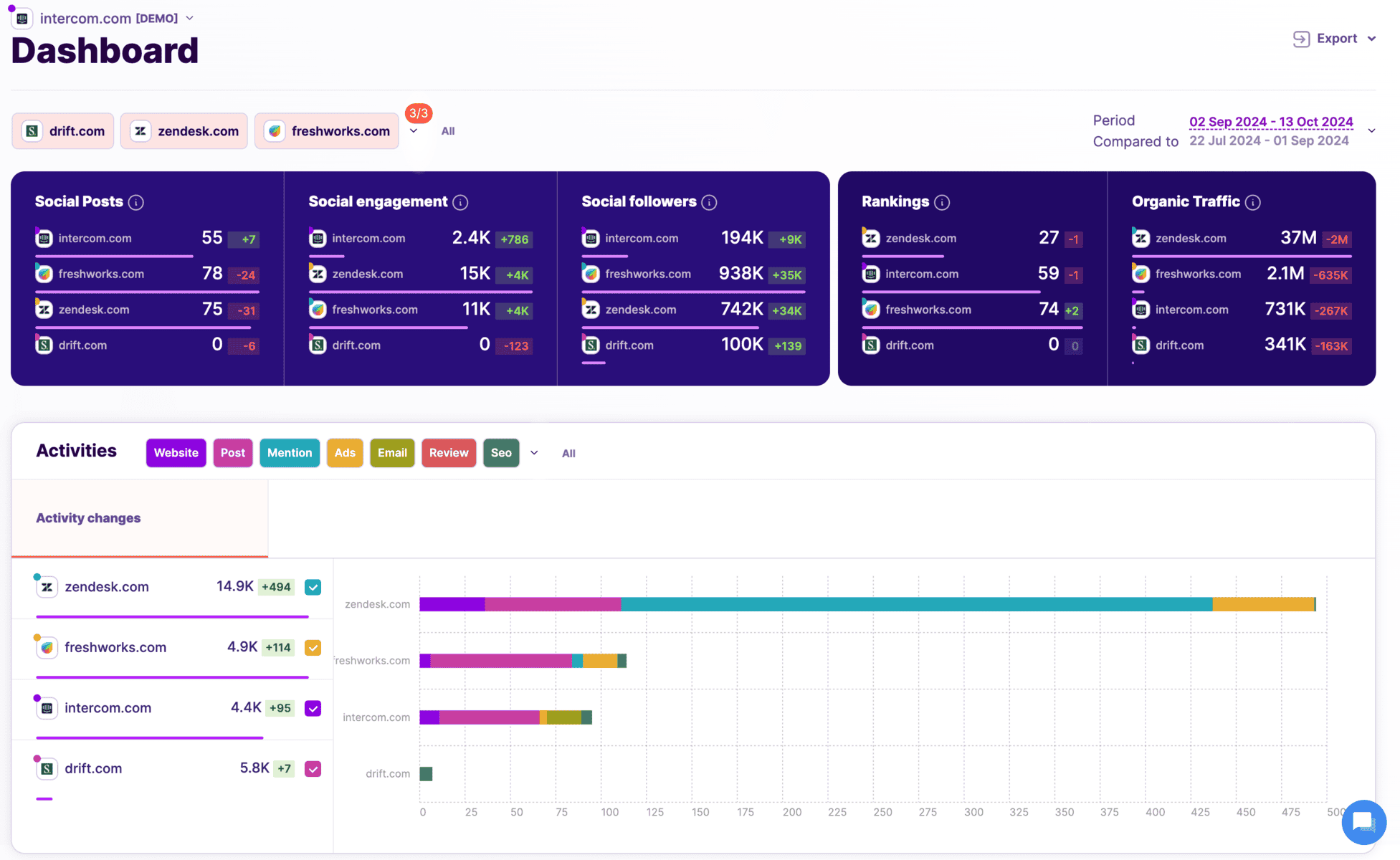
Step 5: Analyze Their Social Media Presence
See what platforms your competitors focus on, what type of content gets the most engagement, and where you can differentiate. Understanding their approach helps you refine your own content strategy.
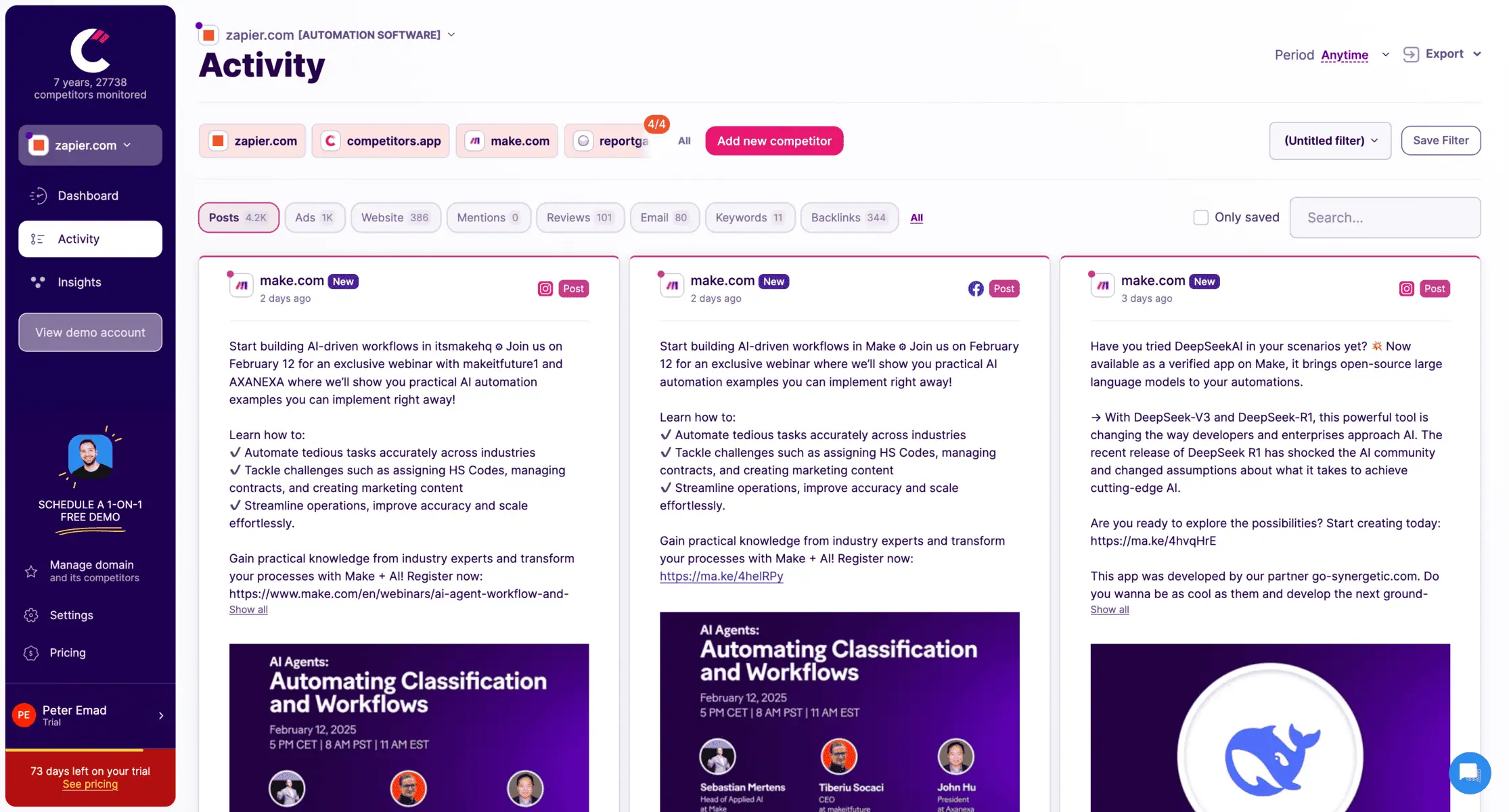
Step 6: Analyze Their Ads
Track where they’re spending their ad budget—Google Ads, Facebook Ads, or other platforms. Study their creatives, messaging, and offers to improve your own advertising strategy.
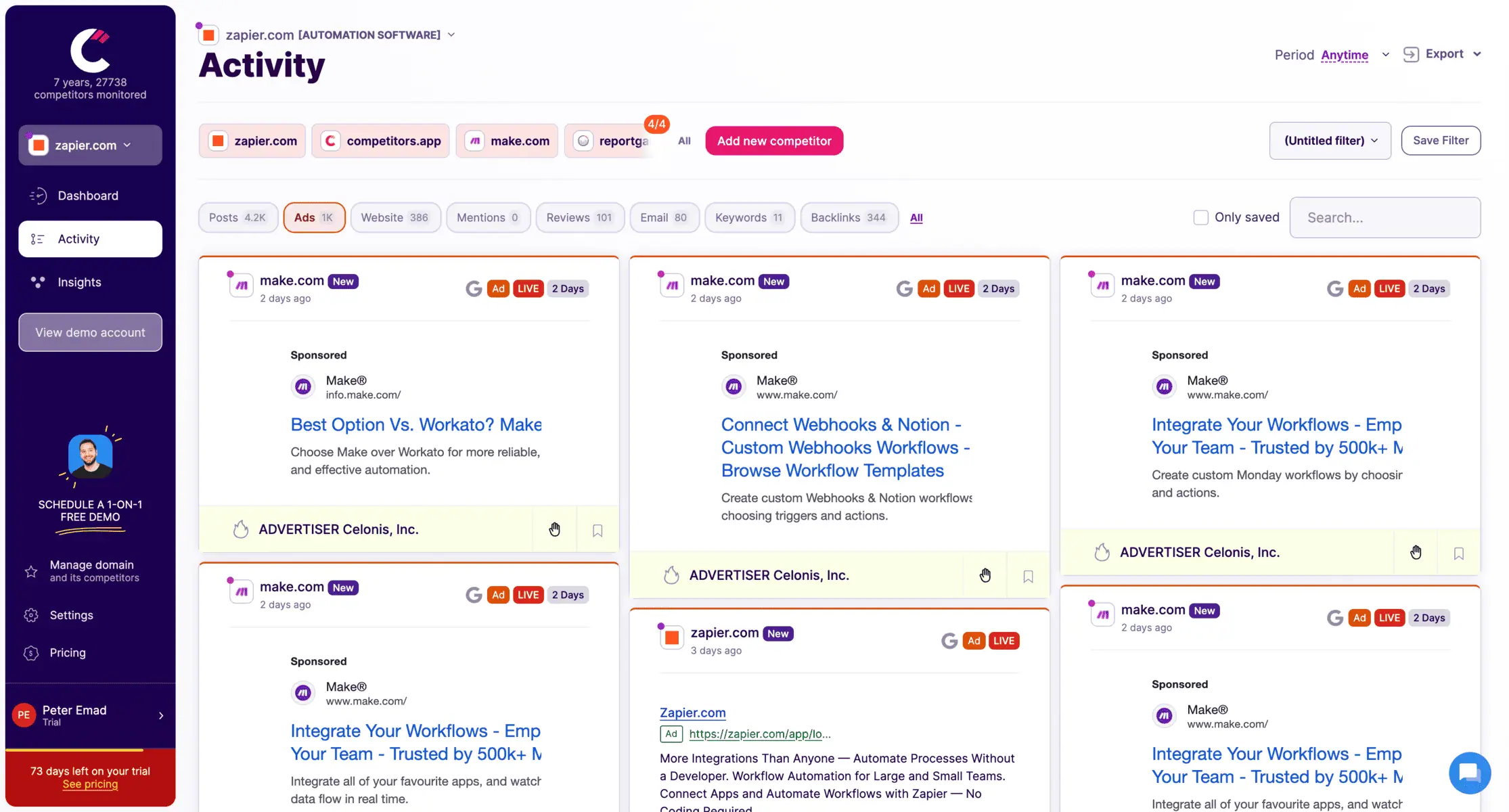
Step 7: Analyze Their SEO and Backlinks
Track where they’re spending their ad budget—Google Ads, Facebook Ads, or other platforms. Study their creatives, messaging, and offers to improve your own advertising strategy.
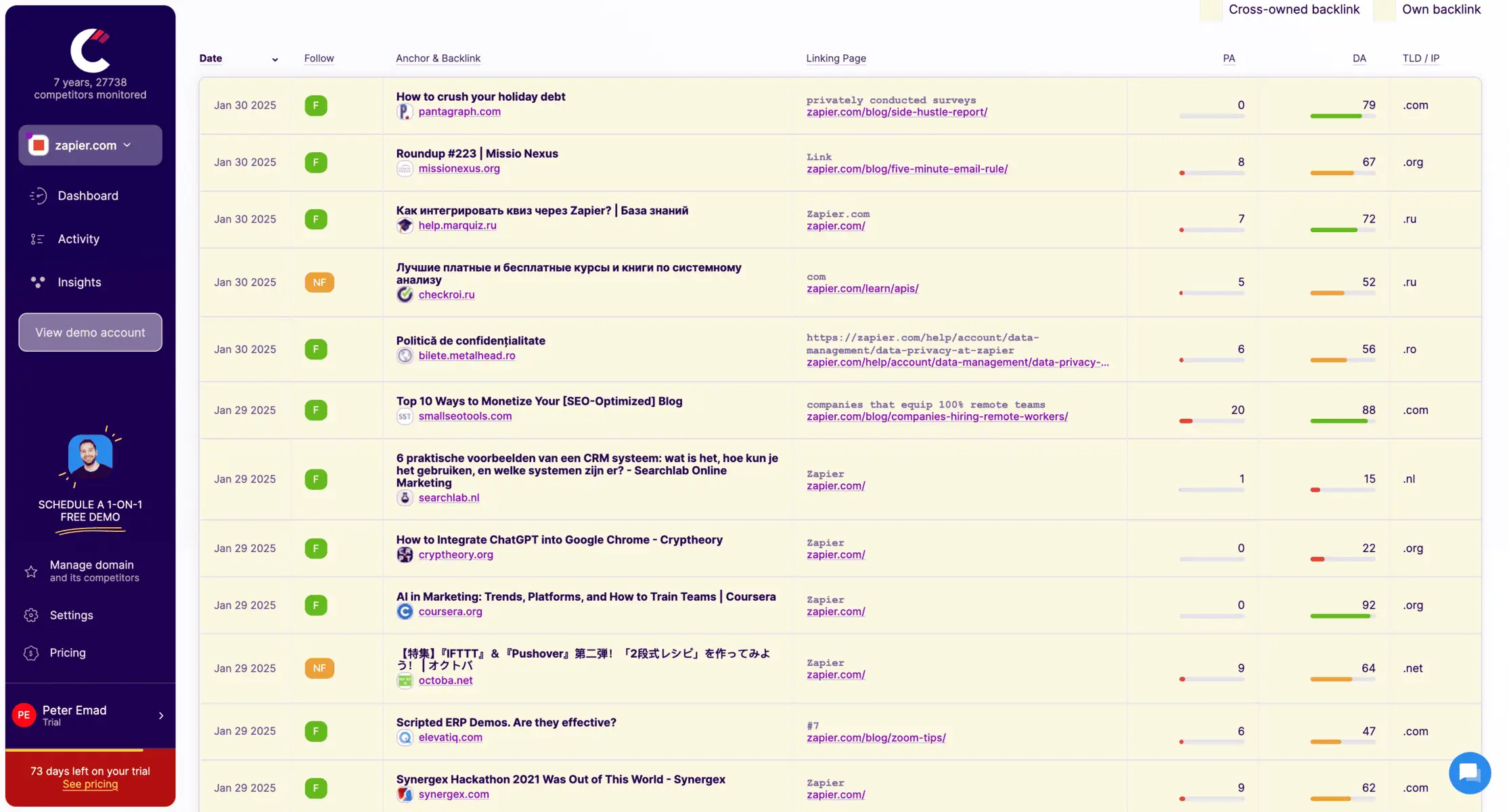

Step 8: Track Their Email Marketing Strategy
Monitor the frequency, tone, and promotional strategies of your competitors’ email campaigns. This allows you to adjust your email marketing for better engagement and conversions.
Step 9: Monitor Reviews and Customer Feedback
Keep an eye on competitor reviews from platforms like Google, Trustpilot, and G2. Understanding what customers love—or complain about—helps you position your business more effectively.
Step 10: Track Website Changes
Receive instant alerts whenever a competitor updates their website, including:
- New product or service launches
- Pricing changes
- Landing page updates
- New pages
- SEO changes
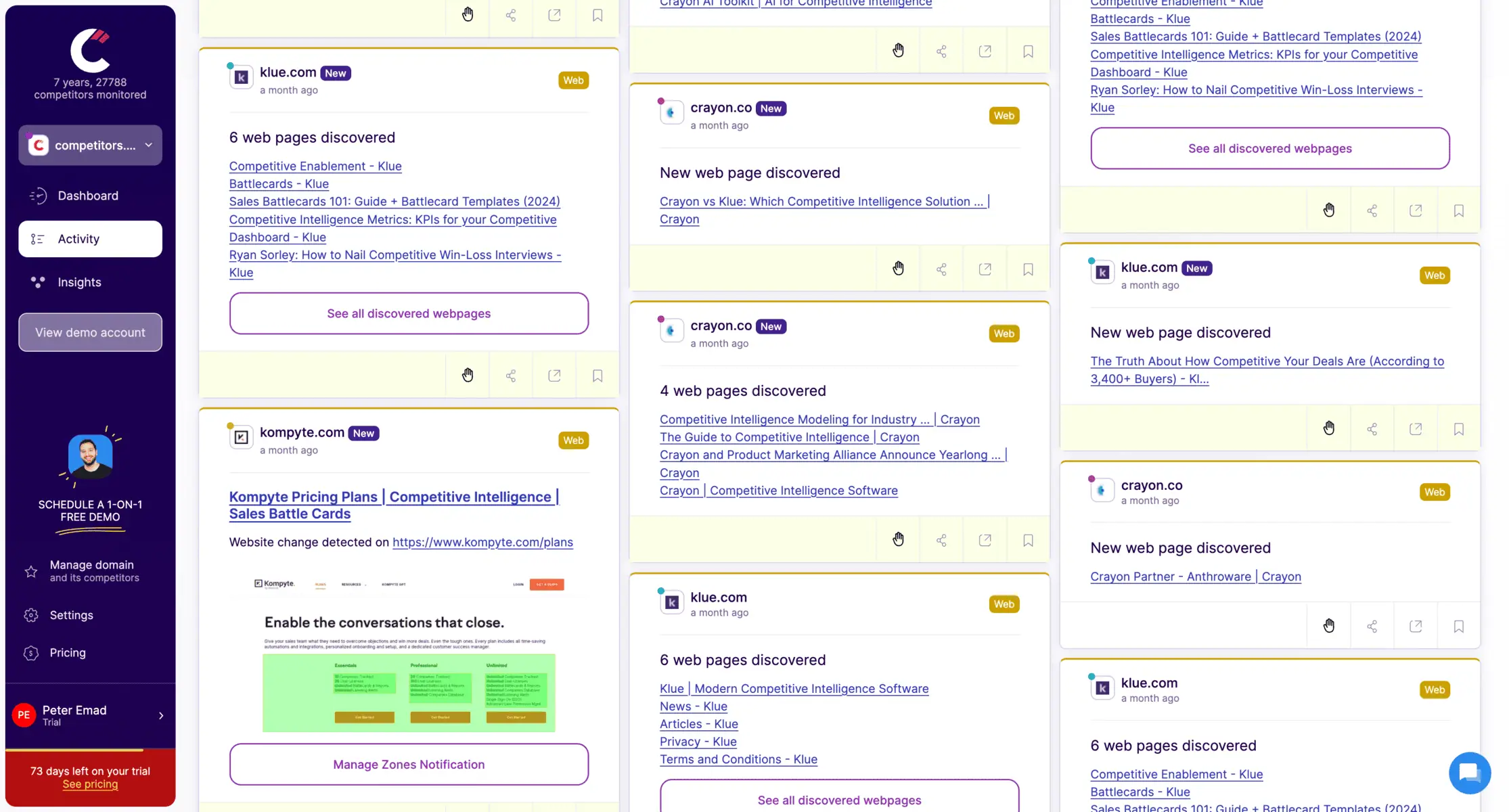
Staying informed about these changes allows you to react quickly and refine your own offerings.
By using Competitors App, you gain an automated, data-driven approach to competitor analysis, saving time while staying ahead of the competition.
Data Collection and Analysis for Competitor Research
Collecting the right data is the backbone of effective competitor analysis. Without accurate and up-to-date insights, brands risk making decisions based on assumptions rather than real market trends. Fashion is dynamic, and relying on outdated data can leave you behind.
Best Practices for Data Collection
To truly understand your competition, you need a structured approach to gathering data. Here’s where to look:
- Competitor Websites – Check for new product launches, pricing changes, and promotions. Look at how collections are structured and what messaging they use.
- Social Media Channels – Track engagement levels, influencer collaborations, and ad campaigns. See which content resonates most with their audience.
- Customer Reviews & Feedback – Read what customers are saying about competitors. Identify common complaints and areas where you can outperform them.
- Market Research Reports – Industry reports provide deep insights into fashion trends, consumer behavior, and emerging market opportunities.
- Google Trends & Search Data – Spot rising trends before they peak. Analyze search volume for products, styles, and competitor brand names.
Tools to streamline data collection:
- Competitors App – Automates tracking of website updates, pricing shifts, and ad strategies.
- Google Trends – Helps identify rising consumer interests in specific fashion styles and products.
- SEMrush / Ahrefs – Provides insights into competitor SEO strategies and top-performing keywords.
- Social Listening Tools (Brandwatch, Sprout Social) – Monitors how people talk about competitors online.
The key is to collect consistently and analyze frequently—fashion trends don’t wait, and neither should your strategy.
Analyzing Competitor Data Effectively
Collecting data is just the first step—what you do with it matters even more. Analyzing competitor insights helps you make smarter decisions, refine your strategies, and find opportunities to outperform others.
Here’s how to break down and use the data effectively:
1. Understand Product Positioning & Differentiation
- Look at what materials, designs, and features competitors emphasize.
- Identify their unique selling propositions (USPs)—do they focus on sustainability, luxury, affordability, or exclusivity?
- Compare their product variety and see if they cater to specific audiences (e.g., streetwear, athleisure, high fashion).
2. Analyze Pricing Strategies
- Track how competitors price their collections—do they use premium pricing, discounts, or seasonal promotions?
- Identify patterns in their pricing—do they frequently adjust costs based on demand or trends?
- Compare their price points to yours to determine if you need to reposition.
3. Evaluate Customer Sentiment & Behavior
Read customer reviews on Trustpilot, Google, and eCommerce platforms—what are people praising or complaining about?
Track engagement on social media—what type of content gets the most interaction?
Analyze customer loyalty—do they have repeat buyers, subscription models, or exclusive membership perks?
4. Break Down Marketing & Branding Performance
- Look at their social media presence—what platforms do they focus on, and how often do they post?
- Track their paid advertising strategy—are they investing in Google Ads, Instagram, TikTok, or influencer collaborations?
- Study their content marketing approach—do they use blogs, video campaigns, or email newsletters?
5. Leverage AI-Powered Tools for Faster Insights
Manually tracking all these elements is time-consuming. That’s why many brands use Competitors App to automate competitor tracking. It helps fashion brands:
- Monitor website updates in real-time.
- Track SEO performance and keyword rankings.
- Analyze social media engagement and ad placements.
- Get instant alerts on pricing, promotions, and product changes.
When you analyze competitor data effectively, you don’t just react to industry trends—you predict and shape them. The goal is to take these insights and refine your own pricing, branding, and marketing to stand out rather than blend in.
Key Metrics and KPIs for Fashion Competitor Analysis
Not all data is useful. To make informed decisions, fashion brands need to track the right key performance indicators (KPIs). These metrics reveal how competitors position themselves, engage customers, and drive sales.
By focusing on the right numbers, you can measure your own brand’s success more accurately and refine your strategy.
Product and Market Positioning
Understanding how competitors position their products helps you identify market gaps and differentiate your brand. Key factors to track:
- Product variety & differentiation – Are competitors launching capsule collections, limited editions, or staple pieces?
- Material & quality focus – Do they emphasize sustainability, luxury craftsmanship, or affordability?
- Branding & messaging – What story are they telling about their brand? Do they target exclusivity, mass appeal, or niche markets?
- Target audience – Who are they selling to? Young professionals, luxury buyers, streetwear fans?
Tracking these elements helps you refine your own product development and branding strategy.
Pricing Strategies
Pricing defines how a brand is perceived. Here’s what to track:
- Average price points – Compare the cost of similar products across brands.
- Discounting & promotions – Do they offer seasonal discounts, flash sales, or bundle deals?
- Dynamic pricing – Do they adjust pricing based on demand or special events?
- Premium vs. budget positioning – Are they competing on exclusivity or affordability?
If competitors frequently discount products, it could mean a pricing war is happening—or that they’re struggling with inventory.
Customer Behavior Insights
Understanding how customers interact with competitors gives you an edge. Key KPIs to monitor:
- Social media engagement – Likes, shares, and comments on platforms like Instagram and TikTok.
- Customer sentiment analysis – Reviews from Google, Trustpilot, and eCommerce platforms.
- Brand loyalty & retention – Do competitors have membership perks, loyalty programs, or subscription models?
Marketing and Branding Performance
Competitor marketing strategies reveal what’s working and where opportunities exist.
- Social media presence – How often do they post? What type of content performs best?
- Paid ad campaigns – Where are they spending on ads (Google, Facebook, TikTok, influencers)?
- Influencer marketing – Who are they collaborating with, and how effective are those partnerships?
Sales and Distribution Channels
A strong distribution strategy is key to success. Track:
- Online vs. offline presence – Are competitors focusing on eCommerce, physical retail, or both?
- Omnichannel strategies – Do they integrate online and offline shopping with features like in-store pickups?
- Wholesale & partnerships – Are they collaborating with department stores, online retailers, or direct-to-consumer?
Tracking these KPIs ensures you’re not just following industry trends—but staying ahead of them.
Competitive Strategies in the Fashion Industry
Competitor analysis isn’t just about gathering data—it’s about using those insights to refine your strategy and gain an edge. The most successful fashion brands don’t just react to what others are doing; they anticipate trends, identify gaps, and position themselves strategically.
Competitor Product Analysis with Consumer Insights
A great product alone isn’t enough. Understanding what makes competitors’ products successful (or unsuccessful) can help shape your own offerings. Key areas to analyze:
- Best-selling products – What items consistently perform well? Are they limited editions, signature pieces, or seasonal drops?
- Material & design choices – Do competitors focus on sustainability, premium craftsmanship, or affordability?
- Customer pain points – Read competitor reviews to find recurring complaints (sizing issues, quality concerns, shipping delays) and use them to your advantage.
- Seasonal demand – How do competitors adjust their collections throughout the year? Do they capitalize on fashion weeks, holiday shopping, or summer trends?
Brands that study competitors’ products carefully can avoid common mistakes and create collections that truly stand out.
Competitor Marketing Strategies
Fashion brands live and die by their marketing. Tracking competitors helps you refine your approach and stay ahead.
- Social media tactics – Which platforms do they focus on? Are they investing in Instagram, TikTok, Pinterest, or a mix?
- Content themes – Do they prioritize behind-the-scenes content, influencer collaborations, or trend-driven campaigns?
- Ad strategy – What kind of ads are they running? Are they using video-heavy campaigns, retargeting ads, or influencer partnerships?
- Email marketing – How often do they send promotions? Do they personalize offers for repeat customers?
Understanding how competitors attract and engage their audience helps optimize your own marketing efforts and avoid wasting resources on ineffective channels.
Fashion Retail Competitor Analysis
Retail strategy can make or break a brand. Whether a company focuses on direct-to-consumer sales, retail partnerships, or a mix, their approach offers valuable insights.
- Physical vs. online presence – Are they expanding into brick-and-mortar stores, or scaling back to eCommerce?
- Wholesale & partnerships – Are they stocked in department stores, online marketplaces, or exclusive boutiques?
- Customer experience – Do they offer perks like free shipping, easy returns, or in-store styling services?
- Omnichannel strategies – Are they integrating online and offline shopping with features like AR try-ons or same-day delivery?
Studying retail strategies helps brands determine where they should focus their own sales efforts for maximum impact.
By applying these competitive strategies, fashion brands can make smarter product, marketing, and retail decisions—leading to stronger sales, better brand positioning, and long-term growth.
Competitive Analysis for Fashion Business Planning
A well-executed competitor analysis isn’t just about gathering insights—it’s about turning them into a solid business strategy. Whether you’re launching a new brand or refining an existing one, structuring your findings properly can help you make informed decisions and gain a competitive edge.
How to Summarize Findings in a Business Plan
Your competitor research should be clear, actionable, and aligned with your business goals. Here’s how to structure it effectively:
- Market Overview – Summarize the competitive landscape. Who are the key players? What market trends are shaping the industry?
- Competitor Breakdown – Categorize competitors into direct, indirect, and emerging. Highlight their strengths, weaknesses, and market positioning.
- Product & Pricing Analysis – Compare product offerings, quality, pricing strategies, and best-selling items. Identify gaps you can fill.
- Marketing & Branding Insights – Analyze how competitors attract and retain customers. Which channels do they prioritize? What kind of content performs best?
- Customer Behavior & Sentiment – Summarize common complaints and praises from competitor reviews. What opportunities exist to improve customer experience?
- Strategic Recommendations – Based on your findings, outline specific actions your brand should take—whether it’s adjusting pricing, refining product quality, or investing in certain marketing channels.
A clear, well-structured competitor analysis helps decision-makers see where the brand stands and what steps need to be taken to grow.
How to Present Your Fashion Competitor Analysis
Your research is only useful if it’s presented in a way that’s easy to understand. Visualizing your data makes it more digestible for teams, investors, and stakeholders. Here are the best ways to present your findings:
- Competitor Benchmarking Reports – Create side-by-side comparisons of key competitors, highlighting differences in pricing, branding, and product positioning.
- Data Visualizations – Use charts and graphs to illustrate pricing trends, market share, and customer sentiment.
- Actionable Insights Summaries – Instead of dumping raw data, provide key takeaways with recommended strategies.
- Real-Time Monitoring Dashboards – Tools like Competitors App allow you to track competitor updates in real time and present the latest insights without manual research.
By presenting competitor research effectively, brands can align their strategy, secure investment, and make confident business decisions based on real market data.
Frequently Asked Questions (FAQ)
1. What is fashion competitor analysis, and why is it important?
Fashion competitor analysis is the process of evaluating other brands in the industry to understand their pricing, marketing, product strategies, and customer engagement. It helps businesses identify market gaps, optimize pricing, improve branding, and refine their marketing efforts to stay competitive.
2. How do I conduct a competitor analysis for fashion brands?
To analyze fashion competitors, follow these steps:
- Identify competitors – Find direct, indirect, and emerging brands in your niche.
- Collect data – Track their pricing, product launches, marketing campaigns, and customer sentiment.
- Use automation tools – Platforms like Competitors App help brands monitor real-time competitor activity without manual research.
- Analyze insights – Adjust your strategy based on competitor strengths and weaknesses.
3. What data sources are used in fashion retail competitor analysis?
Fashion retail competitor analysis relies on data from multiple sources, including:
- Competitor websites – Pricing, promotions, and new product releases.
- Social media platforms – Customer engagement, influencer collaborations, and ad campaigns.
- SEO & search trends – Competitor keyword rankings and traffic insights.
- Market research reports – Industry trends, consumer preferences, and emerging market shifts.
4. How does analyzing competitor fashion channels help in brand strategy?
Studying competitor marketing and sales channels helps fashion brands:
- Identify the best-performing platforms – Whether competitors succeed on Instagram, TikTok, YouTube, or Google Ads.
- Understand audience engagement – What content works best and how competitors interact with customers.
- Optimize marketing spend – Focus budget on the most effective channels instead of wasting resources.
5. What are the key elements of a fashion brand competitor analysis?
A strong competitor analysis should include:
- Product differentiation – What makes each competitor’s product unique?
- Pricing strategies – How they set prices, run promotions, and adjust costs.
- Marketing channels – Where and how they advertise.
- Customer engagement – Loyalty programs, influencer marketing, and reviews.
- Retail strategy – Whether they focus on online sales, physical stores, or wholesale partnerships.
6. How does Competitors App improve fashion competitor analysis?
Competitors App automates the competitor research process, saving time and ensuring real-time tracking of:
- Pricing updates and product launches.
- SEO performance and keyword rankings.
- Ad campaigns and social media engagement.
- Website and branding changes.
By using automation, brands can make data-driven decisions faster without the manual effort.
7. What is the difference between competitor analysis for fashion brands and fashion retail competitor analysis?
- Competitor analysis for fashion brands focuses on overall brand positioning, marketing strategies, and product differentiation.
- Fashion retail competitor analysis is more specific to sales channels, pricing strategies, and how products are distributed (eCommerce, physical stores, or third-party retailers).
8. How often should fashion brands perform competitor analysis?
Fashion brands should conduct comprehensive competitor analysis every quarter and ongoing tracking in real time using automation tools. The fashion industry moves fast—staying informed ensures brands remain competitive.
